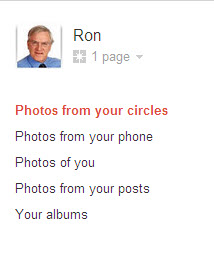
It’s difficult to develop a small business plan when you are confronted with an economic crisis which impacts differentially in parts of your market. Some aspects of your marketplace may suffer severe downturn while others experience growth. Even in our marketplace, the public sector, you can experience severe downturns. The challenge is to develop flexibility to build organizational resilience. However, as the image above shows, behind every dark cloud, there is a silver lining.
One of the results of an economic crisis, is that you are forced to go back to basics and rethink why you exist, who you serve and how you are doing things. This was what we experienced in the Global Financial Crisis when our human resource consultancy business lost 50% of its income in 6 months owing to expenditure constraints imposed by the State Government and the loss of a major client.
What I found sustaining in that situation (and in our current economic crisis) is our vision – to enable the public service to be the best that it can be. We pursue that vision through the human resource services we provide – recruitment and selection, psychometric assessment, career development, development of HR policy and practice, organisational design, training and development, organisational development, research and analysis, management development and team building.
We are very conscious that if the public service delivers effectively and efficiently, the quality of life of many people in the community will improve – whether in transport, child safety, education, economic support, childcare, health, public safety or other arenas impacted positively by quality public services.
[Photo: Copyright Ron Passfield – Sun breaking through dark clouds in an autumn sunrise in Brisbane]
Options for a small business plan in times of economic crisis
When we were confronted with the Global Financial Crisis (GFC) we adopted two core strategies for our business:
- broaden our client base
- broaden the range of services/products we offer.
These are classical strategies frequently discussed in the strategic marketing books and articles. When we adopted these strategies for our human resources business, we were able to rebuild our income after the GFC. What we did not do enough of, is expand our client base within the public sector and this has left us more vulnerable to the current economic crisis for our small business resulting from budget measures introduced by the new State Government in Queensland.
The State Government has introduced a freeze on public sector recruitment, travel and non-essential (non-front line) training and conferences. This effectively freezes our major sources of income and is likely to have an even more dramatic result on our income than the GFC had.
When considering expanding your client base, you really have to revisit why you exist as a small business and who you want to serve. We had explored the idea of expanding into the private sector but decided that the public sector is the client group we want to serve because this group is more closely aligned to our values – including service to the community.
When you are considering expansion of services/products, it is important not to over-extend yourself beyond your areas of competence. We were lucky enough to have untapped core competencies amongst our human resource consultants to make this service expansion an easy transition. The challenge has been to extend our branding to incorporate these new services.
A small business plan when your business-to-business market dries up
With the freeze (of indeterminate length) on recruitment, travel and non-essential training/conferences in the State public sector, we are confronted with a short-term drying up of our business-to-business market. The challenge for us now in our small business planning is to find innovative ways to provide our services and products to a wider client base.
Some of the strategies that you could adopt in this kind of constrained environment are:
- switch from a business to business (B2b) focus to a business to consumer (B2c) focus
- offer free seminars/workshops/e-books to retain and build client loyalty and expand your client base
- expand the geographical offering of your face-to-face services (e.g. offer them interstate)
- offer your services in a different format (e.g. by webinar instead of face-to-face)
- develop products such as e-books, podcasts and videos that you offer globally rather than locally (break through the local geographical barriers)
- explore under-utilized capacity
- develop capacity in anticipation of the release of pent-up demand.
Every economic crisis forces small businesses to build flexibility and innovation into their small business plan if they are to survive and grow their income.






